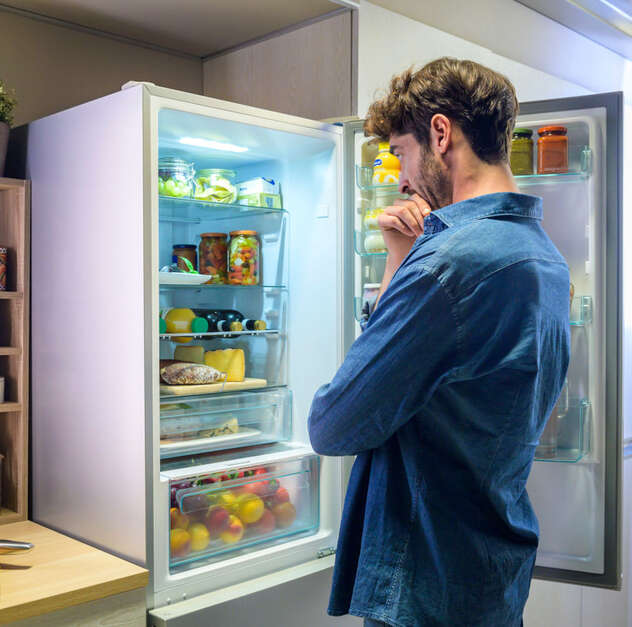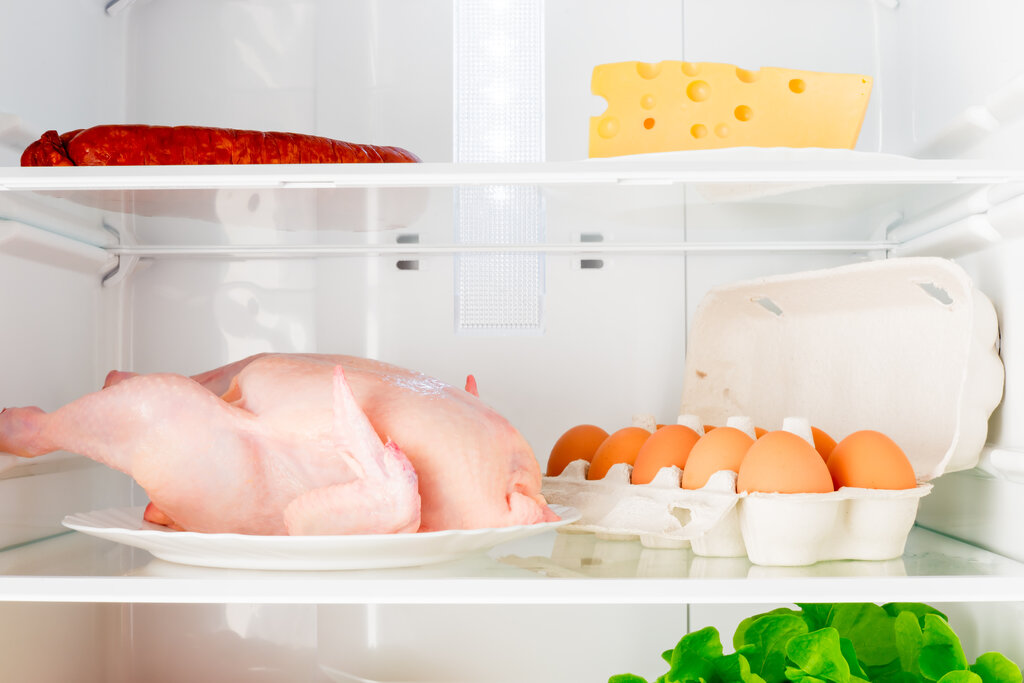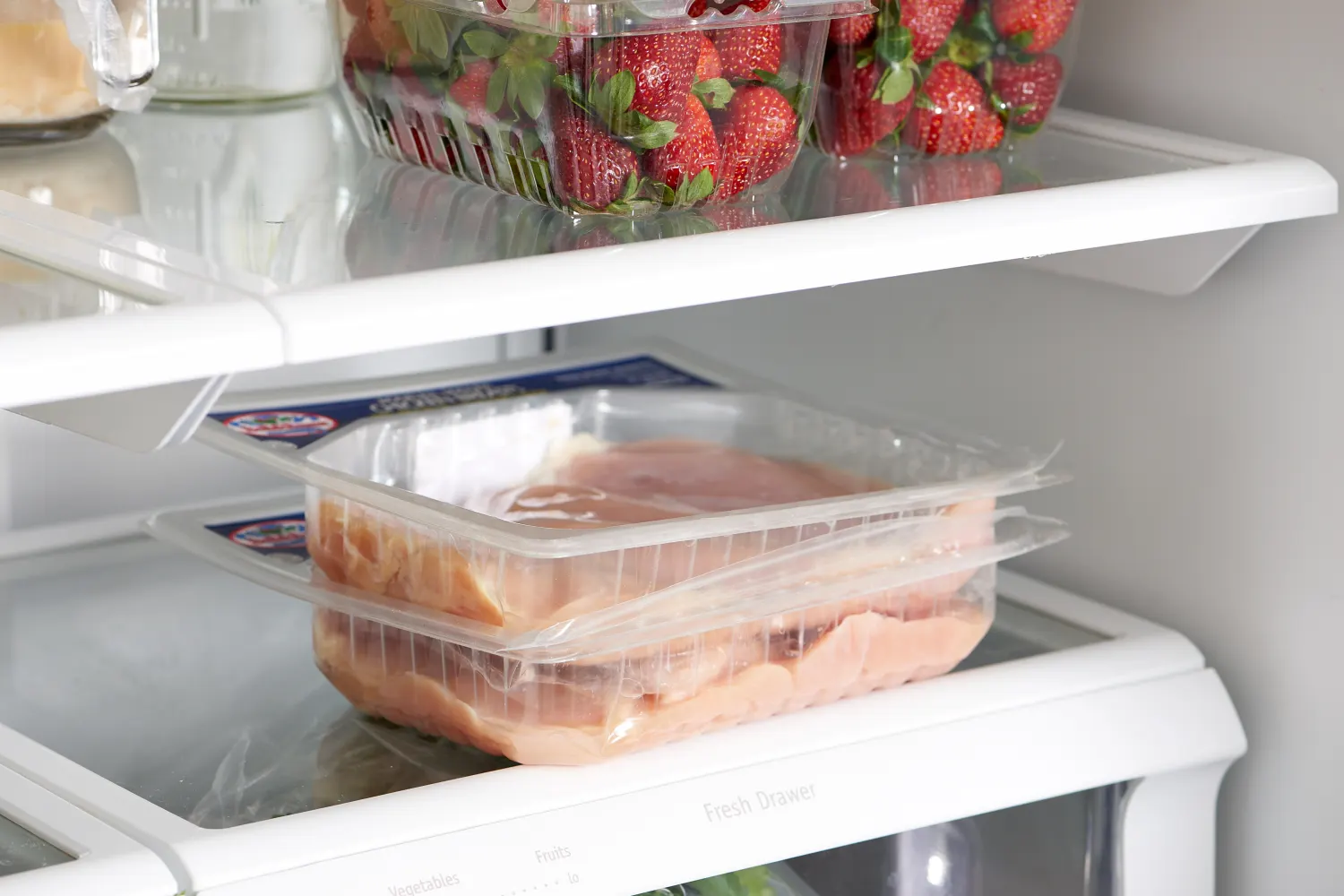Introduction:
Rotisserie chicken is a convenient and versatile meal option, but like all perishable foods, it requires proper handling and storage to ensure safety and freshness. Knowing how long a rotisserie chicken is good in the refrigerator, along with the best practices for storage, can help you make the most of this delicious option while avoiding foodborne illnesses. This guide explores the factors affecting shelf life, storage tips, signs of spoilage, and creative ways to use your leftover rotisserie chicken.

How Long Is a Rotisserie Chicken Good in the Refrigerator:
What Are the Best Practices for Storage and Safety?
Shelf Life:
How Long Can You Safely Store Rotisserie Chicken in the Refrigerator?
Understanding the shelf life of rotisserie chicken is essential for ensuring food safety and quality.
Typical Shelf Life:
Standard Storage Duration:
3 to 4 Days: Typically, a rotisserie chicken can be safely stored in the refrigerator for up to 3 to 4 days. This timeframe ensures the chicken retains its quality while minimizing the risk of bacterial growth.
FDA Guidelines: The U.S. Food and Drug Administration (FDA) recommends consuming cooked poultry within 3 to 4 days when stored at or below 40°F (4°C).
Factors Influencing Shelf Life:
Internal Temperature:
Refrigeration Timing: The sooner you refrigerate the rotisserie chicken after purchase, the better. Allowing it to sit at room temperature for extended periods can decrease its shelf life.
Packaging:
Storage Method: Proper packaging also significantly impacts the chicken’s shelf life. Use airtight containers or tightly wrapped aluminum foil to prevent exposure to air and bacterial contamination.

Proper Storage:
What Are the Best Practices for Storing Rotisserie Chicken?
Adhering to best practices for storage helps maintain the quality and safety of your rotisserie chicken.
Refrigeration Timing:
Immediate Storage:
Cool Down Quickly: Store the rotisserie chicken in the refrigerator immediately. If you’re not planning to eat it right away, remove it from the packaging, allow it to cool, and then transfer it to an airtight container.
Safety Zone: Never leave the chicken at room temperature for more than 2 hours, or 1 hour if the ambient temperature is above 90°F (32°C).
Packaging Techniques:
Airtight Containers:
Preventing Contamination: Use airtight containers or heavy-duty aluminum foil to store the chicken. This prevents air and moisture from entering, which can lead to bacterial growth and spoilage.
Separation: If you’re storing pieces of the chicken, separate them to allow for more even cooling and to reduce the risk of contamination.
Labeling:
Date Marking:
Track Storage Time: Label the container with the date when the chicken was placed in the refrigerator. This helps keep track of how long it has been stored and ensures you consume it within the safe timeframe.

Defrosting Tips:
How Should You Handle Frozen Rotisserie Chicken?
Freezing rotisserie chicken extends its shelf life significantly. Understanding how to freeze and defrost it properly ensures optimal quality.
Freezing Guidelines:
Proper Freezing:
Wrap and Freeze: Wrap the chicken tightly in plastic wrap or aluminum foil, and then place it in a heavy-duty freezer bag. This double layer of protection helps prevent freezer burn.
Date and Label: Label the package with the freezing date. When properly stored, frozen rotisserie chicken can last for up to 4 months in the freezer.
Defrosting Methods:
Safe Thawing:
Refrigerator Thawing: The safest method to defrost frozen rotisserie chicken is by transferring it from the freezer to the refrigerator. Allow 24 hours for it to thaw completely.
Cold Water Thawing: For quicker thawing, place the chicken in a leak-proof plastic bag and submerge it in cold water. Change the water every 30 minutes until the chicken is fully thawed.
Microwave Thawing:
Quick Option: You can also use the defrost setting on your microwave. Be cautious, as this method may start to cook the edges of the chicken, affecting its texture.
Signs of Spoilage:
How Can You Tell If Rotisserie Chicken Has Gone Bad?
Knowing the signs of spoilage helps prevent consuming unsafe chicken.
Visual Inspection:
Appearance Check:
Color Changes: Look for any unusual discoloration, such as gray or green spots, which may indicate mold or bacterial growth. Fresh chicken should maintain a consistent color.
Surface Quality: Check for any slimy texture on the surface. A sticky or viscous feel is a clear sign of spoilage.
Odor Detection:
Smell Test:
Unpleasant Odor: Rotisserie chicken should have a pleasant, roasted smell. If you detect any sour, off-putting, or ammonia-like odors, discard the chicken immediately.
Texture and Taste:
Taste Test:
Consistency Evaluation: If the chicken feels mushy or has an off-taste, it’s time to throw it out. Texture and taste changes are indicators that the chicken is no longer safe to eat.

Health Risks:
What Are the Potential Dangers of Consuming Spoiled Chicken?
Consuming spoiled chicken poses several health risks due to bacterial contamination.
Bacterial Growth:
Pathogens:
Common Bacteria: Bacteria such as Salmonella, Staphylococcus aureus, and Listeria monocytogenes can grow on improperly stored chicken. These pathogens are harmful and can cause serious foodborne illnesses.
Temperature Risk Zone: Bacteria thrive between 40°F (4°C) and 140°F (60°C), known as the “danger zone.” Keeping chicken out of this temperature range minimizes the risk of bacterial growth.
Symptoms of Food Poisoning:
Illness Indicators:
Digestive Issues: Symptoms of food poisoning from spoiled chicken include nausea, vomiting, diarrhea, abdominal cramps, and fever. These symptoms can appear anywhere from a few hours to several days after consumption.
Severe Cases: In severe cases, especially in vulnerable individuals such as the elderly, young children, or immunocompromised persons, food poisoning can lead to hospitalization and long-term health issues.
Creative Uses:
How Can You Make the Most of Leftover Rotisserie Chicken?
Leftover rotisserie chicken can be repurposed into various delicious dishes, extending its usefulness beyond the initial meal.

Chicken Salads:
Healthy and Quick:
Classic Chicken Salad: Combine shredded rotisserie chicken with mayonnaise, celery, onions, and your favorite seasonings for a quick and tasty chicken salad. Serve it on bread, in wraps, or over greens.
Asian-Inspired Salad: Mix shredded chicken with cabbage, carrots, green onions, and a soy-ginger dressing for a refreshing Asian-inspired chicken salad.
Sandwiches and Wraps:
Simple Meals:
Chicken Wraps: Use the chicken in wraps with fresh vegetables, cheese, and a spread of your choice for a quick meal.
Chicken Panini: Create a gourmet panini by layering chicken, pesto, mozzarella, and tomatoes on ciabatta bread, then grill it until the cheese melts.
Pasta and Casseroles:
Hearty Dishes:
Chicken Alfredo: Add shredded chicken to a creamy Alfredo sauce and mix it with fettuccine for a comforting pasta dish. Garnish with parsley and Parmesan cheese.
Chicken Casserole: Combine cooked pasta, chicken, vegetables, and a creamy sauce in a baking dish. Top with cheese and breadcrumbs, then bake until golden and bubbly.
Soups and Stews:
Comforting Options:
Chicken Noodle Soup: Add shredded chicken to a pot of broth, along with carrots, celery, and egg noodles for a classic chicken noodle soup.
Spicy Chicken Stew: Create a hearty stew by simmering chicken with beans, tomatoes, corn, and chili spices. Serve it with cornbread for a satisfying meal.
Conclusion
Rotisserie chicken can last in the refrigerator for up to 3 to 4 days when stored properly, with timing, packaging, and labeling playing crucial roles in maintaining its freshness. Knowing how to identify spoilage signs such as color changes, unpleasant odors, and texture alterations helps ensure you’re consuming safe food. By adhering to best storage practices and getting creative with leftover chicken, you can enjoy delicious meals while minimizing waste. Always prioritize food safety to avoid the health risks associated with consuming spoiled chicken.
